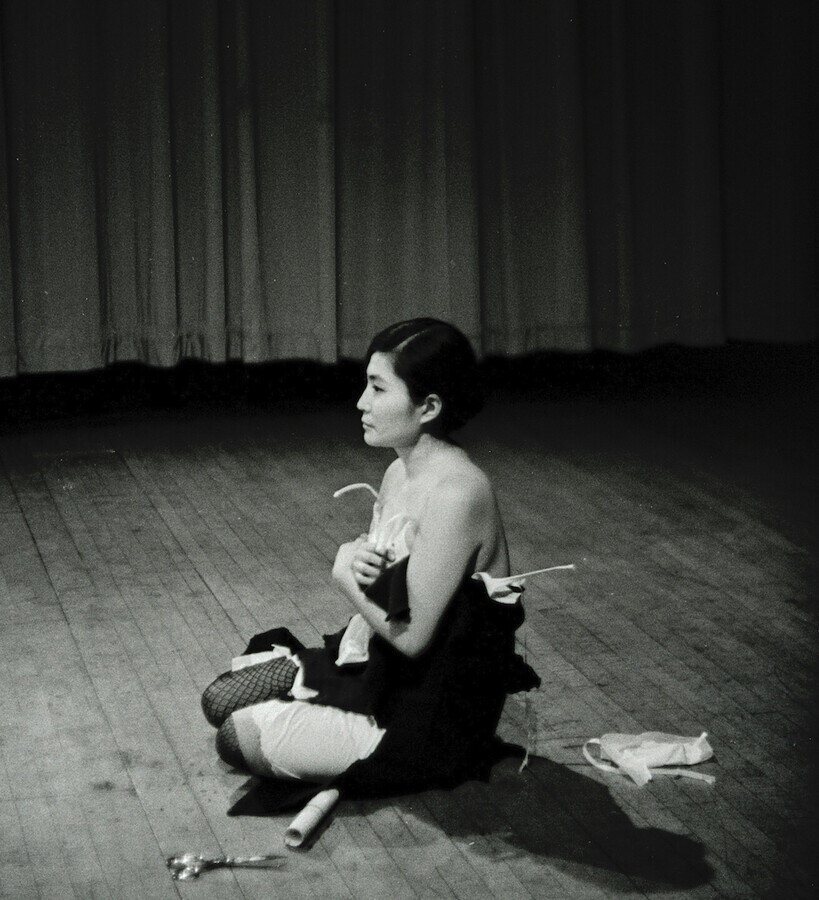My Life in Art - Chris Woodcock
June’s My Life in Art features the choices of art journalist and artist, Chris Woodcock. Chris formerly volunteered with the Friends of the Heseltine Gallery managing marketing and communications and continues to be involved in exhibitions, both as an artist and behind the scenes. Some of her work is currently on show at Nuneaton Museum & Art Gallery. Thank you, Chris, for sharing your life in art with us!
The Burlington House Cartoon by Leonardo da Vinci (c. 1499-1500)
Leonardo da Vinci, The Burlington House Cartoon, c. 1499-1500, charcoal and white chalk on paper, 141.5 x 104.6 cm (The National Gallery, London)
Chris: I first saw this charcoal and chalk work, the only surviving large-scale drawing by Leonardo, when I was an Art History A Level student, on a school trip. One enters a dimly-lit alcove to view it, heightening the sense of privilege and magic. Such delicate detail and use of light and shade to create form. I think my love of monotone art and line work and portraiture emanated partly from this Leonardo drawing at the National Gallery, as well as from visits to the National Portrait Gallery. And the combination of superb portraiture, linear detail and cultural history is the package that makes Hans Holbein my favourite artist of all time. The Holbein in England show at the Tate, London (2006-2007) was pure heaven, from the portraits to the decorative jewellery designs.
Portrait of Boris and Alexander Pasternak by Leonid Pasternak (1905)
Leonid Pasternak, Portrait of Boris and Alexander Pasternak, 1905, pastel on cardboard (Ashmolean Museum, Oxford)
Chris: During my university days, I enjoyed the Ashmolean in Oxford virtually every term-time week. Among so many other treasures, it is home to an important collection of Russian art. You can view some of these exquisite works, close up, in their Print Room, if you book yourself in for a free session, guided by the ever-helpful Caroline Palmer. A postcard of this wonderful pastel drawing was on my uni bedroom wall. I still adore the boys' expressions, the colour palette and the confident variation of tone, surface effect and expressive marks. I also had an English tutor who was a niece of Pasternak!
Self-Portrait by Gwen John (1902)
Gwen John, Self-Portrait, 1902, oil on canvas, 44.8 x 34.9 cm (Tate, London)
Chris: During my early career as a journalist on the evening newspaper in Cardiff, I became the Arts & Entertainments Editor. One of the privileges of this role was to review exhibitions and events at the National Museum of Wales. I recall and love the robust landscapes of Kyffin Williams and the Davies sisters' collection. I have opted for Gwen John because of her under-rated career, dominated by a man's world where she was overshadowed by her brother Augustus and her affair with Rodin. At last, this year she is winning due focus at the National Museum of Wales, although this slightly haunting and isolated self-portrait is not in their collection. Meanwhile, Chapter Arts Centre in Canton, Cardiff is a brilliant showcase for diverse contemporary Welsh art and artists.
Cut Piece by Yoko Ono (1964)
Yoko Ono, Still from Cut Piece, 1964, performance
Chris: As a mature student, studying for an MA in Art History via the Open University, I finally got to broaden my knowledge of art genres and my appreciation of feminist art. This was one of Ono's early performance pieces and is still provocative and relevant today – focusing on objectification and exploitation. I so admire those women artists who made us reflect on how to be responsible viewers and admirers of art and who, to this day, express important socio-political ideas and arguments through their work, as the global struggle for true gender equality continues.
Martin Ruzé by Frans Pourbus the Younger (1612)
Franz Pourbous the Younger, Martin Ruzé, 1612, oil on canvas, 64.8 x 53.2 cm (Upton House, Warwickshire)
Chris: For about six years, I volunteered as a room guide at Upton House, just north of Banbury. My passion for the place is based on its often-unsung art collection, amassed by Lord Bearsted at the start of the 20th century. I take such pleasure in studying and appreciating its works and in sharing them, in all kinds of ways, with visitors. Among my favourites is this breath-taking portrait of illustrious Court politician Martin Ruzé, who was a staggering 83-years-old at the time. Frans Pourbus was known for his rendering of fine textures and garments, but just look at that face and the depiction of age and character.
The Librarian by Stephen Woodcock (2018)
Stephen Woodcock, The Librarian, 2018
Chris: We've had the chance to 'retire early' (from our first careers) and have embraced it. My husband has been an amateur potter for decades and now has much more time to produce some of his best sculptural and throwing work, both in his pottery in the garden and at Warwickshire College in Leamington, where he's a mature student. This is one of his fantastical mechanical animals. Some are humorous or whimsical, others malevolent or enigmatic, often fusing strange mechanical joints and parts with organic and animal elements. The story and personality of each emerges as he experiments with stoneware and oxide devices to build it. All aim to be appealingly idiosyncratic and unconventional. I'm proud of his accomplishment in clay.
Why do you #LOVEArt?
“Art is enriching, mind-broadening and fascinating, opening the door to human history, revealing our beauty and our ugliness. It’s a vital means of experience and expression, a way to connect and engage with people, creatures and places, whether doing or viewing. Quite simply, it makes life more worthwhile.”






